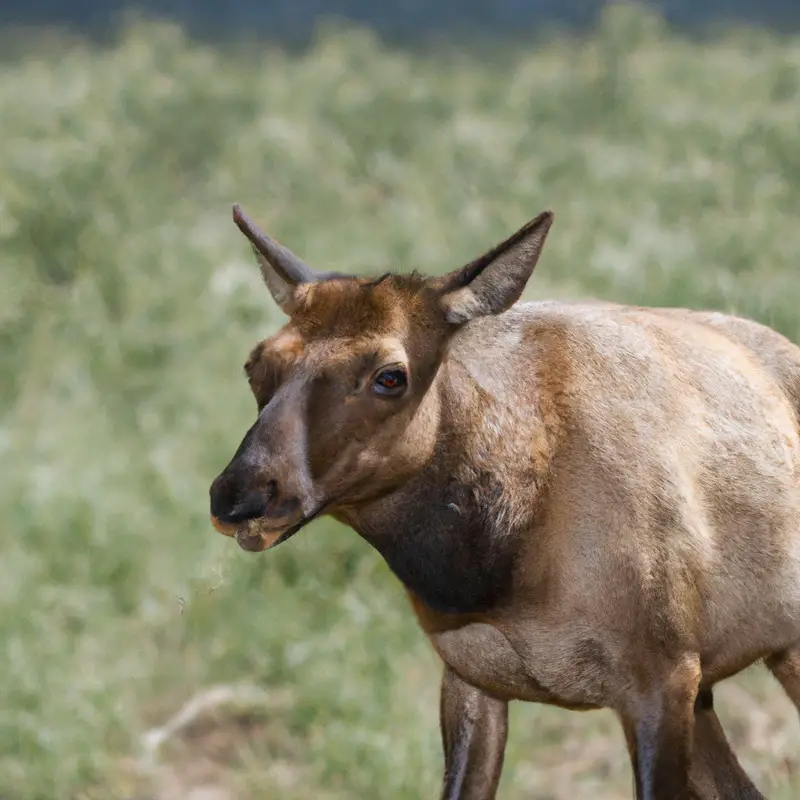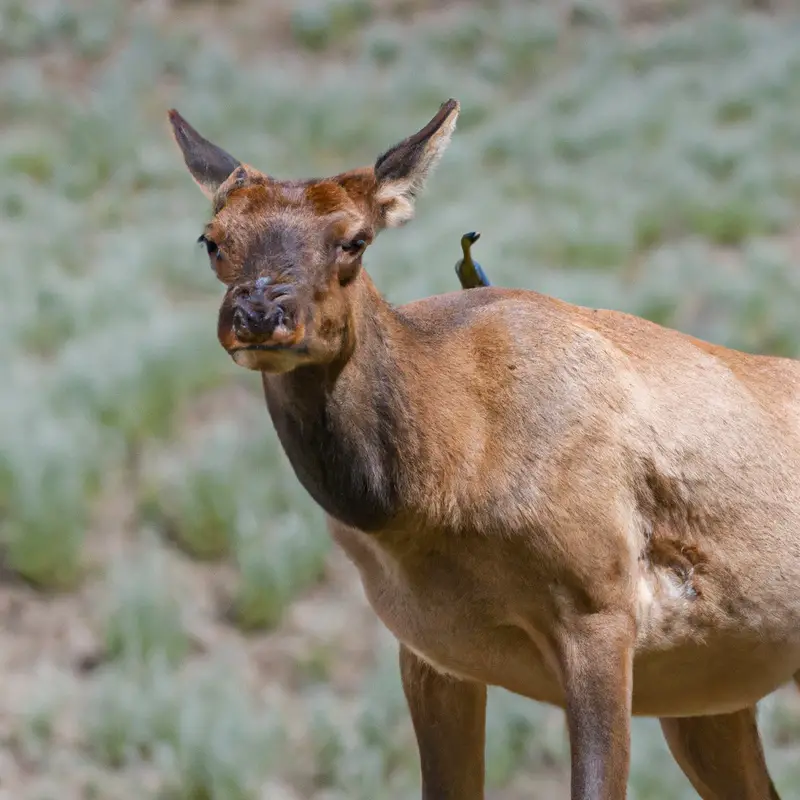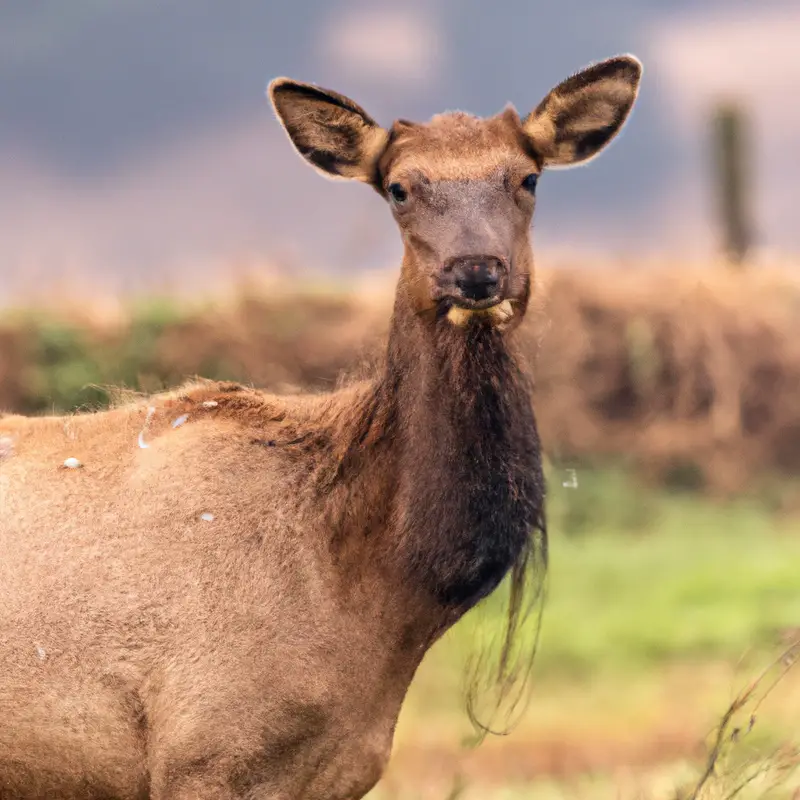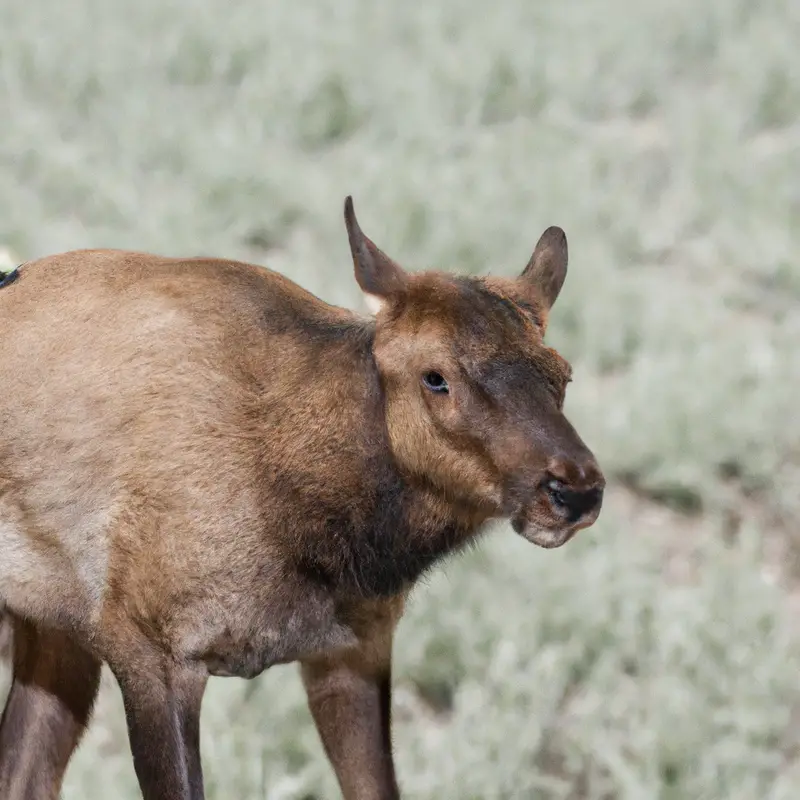Key Takeaways:
- Tule elk is an iconic species in California that has faced significant declines in the past but has made a remarkable recovery.
- Hunting of Tule elk is allowed in specific areas of California with regulated quotas and strict management practices.
- Hunting plays a crucial role in maintaining a balanced ecosystem and controlling the population of Tule elk.
- The California Department of Fish and Wildlife closely monitors and regulates hunting activities to ensure sustainable conservation of Tule elk populations.
Are you ready for an unforgettable hunting adventure in the picturesque landscapes of California? If so, you won’t want to miss the opportunity to hunt the majestic Tule elk.
As an expert on hunting in California, I’m excited to share with you everything you need to know about pursuing this magnificent creature.
From the fascinating history of the Tule elk population to essential hunting gear and strategies, this blog article has got you covered. Get ready to immerse yourself in the thrill of the hunt, as we explore the world of Tule elk hunting in California.
Let’s dive in!
Hunting Tule elk in California | |
|---|---|
Location | Tule elk population resides in the state of California, mainly found in various areas such as Owens Valley, Carrizo Plain National Monument, Point Reyes National Seashore, and other state Parks and Reserves. |
Season | August 1st to December 31st |
License | California state hunting license and Tule elk tag are required. |
Bag limit | Generally, one bull elk per season. Specific regulations may vary based on the management unit. |
Hunting method | Tule elk hunting in California can be conducted through various methods such as rifle hunting, archery hunting, or muzzleloader hunting. |
Pros | -Unique opportunity to hunt a native California species -Experience the thrill of hunting in beautiful natural surroundings -Potential for excellent trophy-quality bulls |
Cons | -Limited hunting opportunities due to controlled quota system -Success rates can vary due to the elusive nature of Tule elk -Higher hunting permit fees compared to other species |
Overview of Tule Elk
Brief history of Tule elk population in California
The Tule elk population in California has a fascinating history. These majestic creatures were once near extinction, with only about 28 individuals remaining in the late 1800s.
Conservation efforts, such as the establishment of the Tule Elk Reserve in 1932, have helped save the species.
Today, the population has rebounded to over 5,000 Tule elk, a testament to the tireless work of dedicated conservationists. Although still facing challenges, the Tule elk population’s recovery is a remarkable success story of conservation in California.

Description of Tule elk physical characteristics and habitat
Tule elk are large mammals with distinct physical features. They have a reddish-brown coat that can appear almost black during the winter months.
The males, or bulls, are larger than the females, or cows, and can weigh up to 700 pounds.
They have impressive antlers that can reach up to four feet long. In terms of habitat, Tule elk are primarily found in California.
They inhabit grasslands, marshes, and open woodlands.
They prefer areas with access to water sources such as rivers, lakes, or ponds. These habitats provide them with the necessary food and cover.
Tule elk are well adapted to survive in these environments, and their population continues to thrive in certain areas of California.
Hunting Regulations and Seasons
Overview of hunting regulations in California
Hunting regulations in California are designed to ensure the responsible management of wildlife populations while promoting safety and conservation.
The California Department of Fish and Wildlife sets the regulations, which vary depending on the species being hunted.
Hunters must obtain a valid hunting license and adhere to specific hunting seasons, bag limits, and weapon restrictions.
Additionally, hunters must follow ethical practices and obtain appropriate tags and permits for certain species.
Violating hunting regulations can result in fines and the loss of hunting privileges.

Specific regulations and licensing requirements for Tule elk hunting
When it comes to Tule elk hunting in California, there are specific regulations and licensing requirements that you need to be aware of.
You must have a valid California hunting license, as well as a tag specifically for hunting Tule elk.
These tags are issued through a lottery system, and there are a limited number available each year.
Additionally, you must adhere to the specific hunting seasons and limits set by the California Department of Fish and Wildlife.
It’s important to familiarize yourself with all the regulations and requirements before planning your Tule elk hunting trip.
Information on hunting seasons and quotas for Tule elk
Tule elk hunting seasons and quotas depend on the specific area and management plan. The California Department of Fish and Wildlife sets the seasons and quotas for Tule elk hunting.
They have established different hunting zones and designated specific periods for hunting.
These seasons and quotas are designed to ensure sustainable management of the Tule elk population while providing hunting opportunities. It’s important to check the current regulations and obtain the necessary hunting permits before participating in Tule elk hunting.
Ultimately, the goal is to strike a balance between conservation and outdoor recreation.

Where to Hunt Tule Elk
List of public land areas where Tule elk can be hunted
Here is a list of public land areas where you can hunt Tule elk in California:
- Grizzly Island Wildlife Area: Located in Solano County, this area provides hunting opportunities for Tule elk during the designated seasons.
- Owens Valley: Situated in Inyo and Mono Counties, this region offers hunting permits for Tule elk, allowing you to experience the thrill of hunting in a stunning landscape.
- Cache Creek: Located in Colusa County, this public land area offers Tule elk hunting opportunities. Make sure to check the hunting regulations before planning your trip.
- Carrizo Plain National Monument: Located in San Luis Obispo County, this vast area provides hunting permits for Tule elk, allowing you to explore its diverse habitats.
- Point Reyes National Seashore: Situated in Marin County, this scenic area offers Tule elk hunting permits. Enjoy the beautiful coastal views while hunting for these majestic creatures.
Remember to review and follow all hunting regulations and obtain the necessary permits before heading out to these public land areas.
Recommendations for private land hunting opportunities with Tule elk
If you’re looking for private land hunting opportunities with Tule elk, there are a few recommendations I have for you.
- Research local hunting guides and outfitters who offer private land hunts for Tule elk. They can provide you with the necessary permits and ensure you have a successful hunt.
- Network with landowners in Tule elk habitat areas. Some landowners may allow hunting on their private property, but it’s important to establish a respectful and trustworthy relationship with them beforehand.
- Utilize online forums and hunting communities to connect with other hunters who have access to private land with Tule elk. They may be able to offer recommendations or even invite you to join them on a hunt.
- Consider joining a hunting lease or club that has access to private land with Tule elk. These organizations often have established relationships with landowners and can provide exclusive hunting opportunities.
Remember to always respect private property and the rules and regulations set forth by the landowner.
Hunting on private land can offer unique opportunities and increase your chances of a successful Tule elk hunt.
Essential Hunting Gear for Tule Elk
List of necessary firearms and ammunition for Tule elk hunting
For Tule elk hunting in California, there are a few firearms and ammunition that are necessary.
Here’s a quick list to help you get started:
- Rifle: It is recommended to have a high-powered rifle chambered in .270, .30-06, or .300 Winchester Magnum. These calibers provide the necessary power and range for hunting Tule elk.
- Optics: A good quality rifle scope is essential for accurate aiming. Look for scopes with clear optics and a magnification range suitable for long-range shooting.
- Ammunition: Choose ammunition specifically designed for big-game hunting. Look for bullets with controlled expansion and deep penetration to ensure a clean and ethical kill.
- Binoculars: A decent pair of binoculars will help you spot Tule elk from a distance, making it easier to plan your approach and stalk.
- Range finder: A range finder helps you determine the distance between you and your target, ensuring accurate shot placement and minimizing the risk of wounding the animal.
Remember to always follow local laws and regulations regarding hunting and firearm use.
Additionally, it’s essential to practice shooting proficiency and safety before heading out into the field.
Happy hunting!
Recommended gear for tracking, scouting, and field dressing Tule elk
When it comes to tracking, scouting, and field dressing Tule elk, there are a few essential gear items you’ll want to have on hand.
Firstly, a quality pair of binoculars will help you spot elk from a distance and plan your approach.
Secondly, a good GPS device will keep you on track and help you navigate in unfamiliar terrain.
Thirdly, a durable and sharp hunting knife is crucial for field dressing and processing the elk once you’ve harvested it.
Additionally, a reliable backpack to carry your gear and a sturdy set of boots for traversing rough terrain are also recommended.
Lastly, a lightweight yet warm layering system of clothing is essential for comfort and concealment.
By having these gear items, you’ll be well equipped for a successful Tule elk hunt.
Hunting Techniques and Strategies
Tips for locating Tule elk herds and scouting their behavior
To locate Tule elk herds and understand their behavior, try these tips:
- Study their habitat: Research the specific areas where Tule elk are known to roam. Look for clues like water sources, grazing areas, and dense vegetation.
- Scan the landscape: Use binoculars or spotting scopes to scan the terrain for signs of elk activity, such as tracks, droppings, or rubbed trees.
- Listen for bugling: During the rutting season, male Tule elk emit distinctive bugling calls. Listen for these vocalizations to help pinpoint their location.
- Observe at dawn and dusk: Tule elk are more active during low-light periods. Stake out areas known to have elk sightings during these times for a better chance of spotting them.
- Be patient and still: When observing elk, stay quiet, still, and downwind to avoid alerting them. Patience is key, as elk may take time to appear or engage in certain behaviors.
- Note their patterns: Pay attention to the paths the elk take, their preferred grazing areas, and their interactions with each other. Understanding their behavior will increase your chances of finding them again in the future.
Remember, always respect wildlife and follow legal hunting regulations if you are planning to hunt Tule elk.
Strategies for pursuing and stalking Tule elk effectively
To pursue and stalk Tule elk effectively, it’s important to employ certain strategies. Firstly, you’ll want to carefully study the behavior and habitat of these majestic animals.
Understanding their habits will help you determine the best times and locations to find them.
Secondly, camouflage yourself well and move quietly. Stealth is key in getting close enough for a successful hunt.
Thirdly, be patient and observant.
Tule elk have keen senses, so taking your time and staying alert will increase your chances of a successful stalk. Lastly, practice your shooting skills to ensure an accurate and ethical hunt.
Happy hunting!
Safety and Ethics in Tule Elk Hunting
Importance of following safety guidelines and regulations
Following safety guidelines and regulations is essential when engaging in any activity, including hunting Tule elk in California.
By adhering to these guidelines, you can prioritize your own safety and the safety of others involved in the hunt.
Additionally, following regulations ensures the conservation and sustainability of the Tule elk population.
It helps maintain a balance between the needs of hunters and the preservation of the species.
Ignoring or disregarding safety guidelines and regulations can not only put lives at risk but also harm the ecosystem and jeopardize the future of Tule elk hunting.
Discussion on ethical considerations when hunting Tule elk
When it comes to hunting Tule elk in California, it’s important to consider the ethics of the sport.
Here are a few things to keep in mind:
- Respect for the animal: As a hunter, it’s essential to treat the Tule elk with respect and ensure a clean, humane kill. This means practicing marksmanship, using appropriate firearms, and being mindful of shot placement to minimize suffering.
- Legal and ethical guidelines: Familiarize yourself with the hunting regulations in the area and adhere to them strictly. This includes obtaining the necessary licenses and permits, following designated hunting seasons, and adhering to bag limits.
- Sustainable hunting practices: Hunt responsibly by focusing on sustainability and conservation. Avoid targeting vulnerable or endangered animals and consider the long-term impact of your actions on the elk population and their habitat.
- Sportsmanship and fair chase: Embrace the spirit of fair chase by honoring the elk’s natural instincts and behaviors. Avoid using unethical tactics such as baiting or exploiting artificial advantages that diminish the animal’s chances of escape.
By considering these ethical considerations, you can ensure that hunting Tule elk is not only a thrilling sport but also an opportunity to engage in responsible and respectful stewardship of the natural world.
Meat Processing and Recipes
Overview of field dressing and meat processing for Tule elk
Field dressing and meat processing for Tule elk involves several important steps. After harvesting the elk, it is essential to field dress it promptly to remove the internal organs and minimize spoilage.
Next, the elk should be transported to a cool location for further processing.
Skinning, quartering, and removing the meat from bones are the main tasks during processing. It is crucial to handle the meat with care to prevent contamination and ensure its quality.
Proper packaging and storage are also vital to maintain freshness.
Finally, cooking and enjoying the delicious elk meat is the best reward for your successful hunt!
Suggestions for delicious Tule elk recipes
Want to try cooking some mouthwatering Tule elk dishes? Here are a few suggestions for delicious recipes:
- Grilled Tule Elk Steak: Marinate the steak with your favorite seasoning, then grill to your preferred doneness. Serve with roasted vegetables or a side salad for a complete meal.
- Tule Elk Chili: Brown ground Tule elk meat with onions, garlic, and spices. Add tomatoes, beans, and broth, then simmer for a rich and hearty chili. Top with shredded cheese and a dollop of sour cream.
- Tule Elk Stew: Slow cook chunks of Tule elk in a savory broth along with vegetables like carrots, potatoes, and onions. The long cooking time allows the flavors to meld together beautifully.
- Tule Elk Meatballs: Combine ground Tule elk with breadcrumbs, egg, herbs, and spices. Roll into meatballs and bake or fry until golden brown. Serve with your favorite marinara sauce and pasta.
Remember to adjust cooking times and temperatures according to your preferences and always make sure the elk is cooked to a safe temperature. Enjoy exploring these delicious Tule elk recipes!
Frequently Asked Questions
What is the current population of Tule elk in California?
The current population of Tule elk in California is estimated to be around 5,700 individuals. This native subspecies of elk, unique to California, has made a successful recovery from near extinction in the early 20th century.
Tule elk can now be found in various areas throughout the state, including national parks and preserves, providing opportunities for people to observe and appreciate these majestic creatures in their natural habitat.
It is important to continue monitoring and protecting their population to ensure their long-term survival.
Can non-residents hunt Tule elk in California?
Yes, non-residents can hunt Tule elk in California. The California Department of Fish and Wildlife offers hunting tags for Tule elk to both residents and non-residents.
Non-residents are subject to the same regulations and restrictions as residents, including obtaining the necessary licenses and permits.
It’s important to check the specific hunting season and regulations for Tule elk in the area you plan to hunt in California. Happy hunting!
Are there any restrictions on hunting methods for Tule elk?
Are there any restrictions on hunting methods for Tule elk? Yes, there are restrictions on hunting methods for Tule elk in order to ensure responsible and sustainable hunting practices.
Hunters are required to possess a valid hunting license and adhere to specific seasons and bag limits set by the California Department of Fish and Wildlife.
Additionally, the use of certain weapons, such as fully automatic firearms, is prohibited. It is important to review and follow all regulations to ensure the ethical and legal hunting of Tule elk.
How difficult is it to obtain a Tule elk hunting tag in California?
Obtaining a Tule elk hunting tag in California can be quite challenging.
The limited number of tags available and high demand make it a competitive process.
The California Department of Fish and Wildlife conducts a lottery system, where hunters must submit their applications and hope to be selected.
The odds of obtaining a tag can vary depending on the specific hunting zone and the number of applicants.
It’s important to stay informed about application deadlines and requirements to have the best chance of obtaining a Tule elk hunting tag in California.
Final Verdict
Hunting Tule elk in California is a thrilling and rewarding experience for outdoor enthusiasts. With a rich history and unique physical characteristics, Tule elk offer hunters a challenging pursuit and a chance to connect with nature.
By following the hunting regulations and seasons set by the state, aspiring hunters can obtain the necessary licenses and tags to pursue Tule elk.
Whether hunting on public land or private properties, there are ample opportunities to encounter these majestic animals. Equipped with the right gear and hunting techniques, hunters can increase their chances of success.
It is important to prioritize safety and ethical considerations throughout the hunting process.
Lastly, Tule elk provides delicious and nutritious meat options that can be enjoyed through various recipes. Overall, hunting Tule elk is a thrilling adventure that allows individuals to experience the beauty of the California wilderness while contributing to wildlife conservation efforts.








